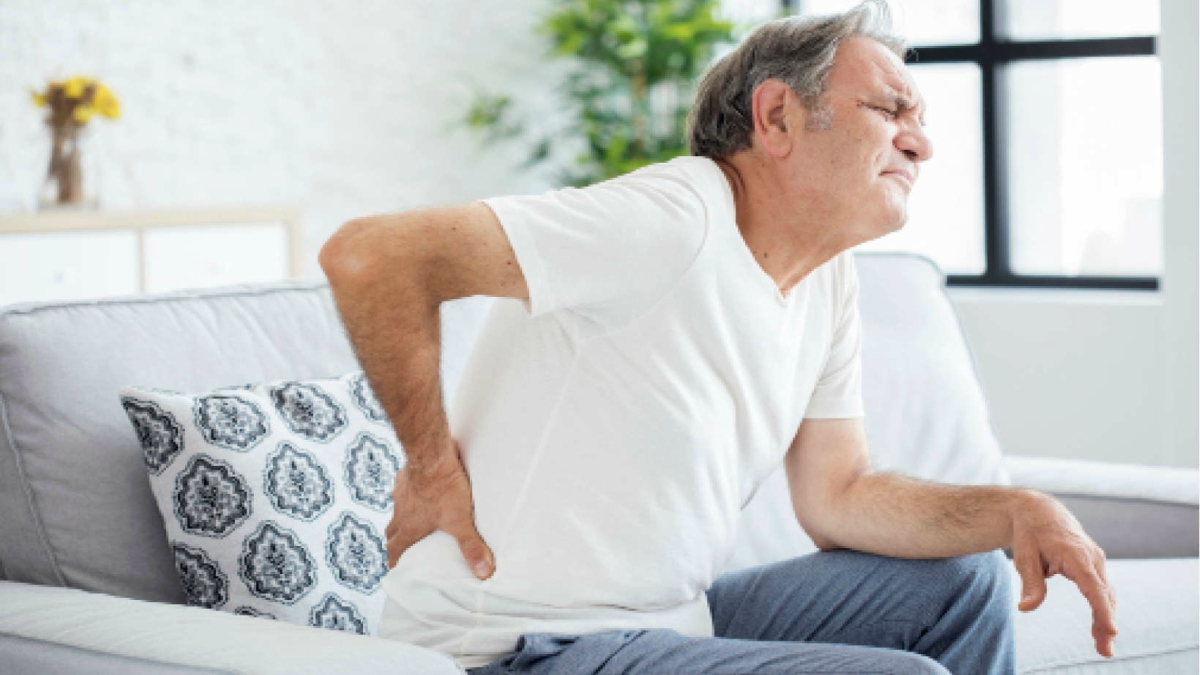
Staying warm is important as temperature is dripping with every passing day, so is taking care of your health to ward off common diseases during this season: Flu, common cold, fever, tonsil, eczema, joint pain and cold sores among others. Various studies show that viruses tend to multiply faster in wintertime which can make people fall ill. Thus, it’s wise to stay extra vigilant about your well-being.
Most often, the elderly experience acute pain in bones and joints during winters though young people complain of lower back pain at times. Dr Nitiraj Oberoi, director Orthopedics / Bone and Joint Surgery at Fortis Escorts Bone and Joint Institute, Delhi agrees, “Some of us are likely to suffer from common aches and pains, especially pain in lower back and joints as winter sets in. The elderly are more prone to have stiffness in the large joints of the lower limb and sometimes the fingers. Young active people can experience early morning lower back pain.” Adding to it, Dr Chandrashekhar Dixit, consultant- Orthopedic and Joint Replacement at Jupiter Hospital, Pune says, “Knee and hip pain are the most common complaints, joint pain can affect any part of your body be it from your ankles to your shoulders or hands. It can range from mildly irritating to excruciating pain and can last for a few weeks.”
If you experience any unusual or new symptoms including persistent swelling and redness consult your orthopedic specialist, advises Dr Dixit. “The onset of winters sees flaring up of the bone pain and joint discomfort in people with preexisting arthritis and osteoporosis. Staying indoors decreases the activity levels and inadequate amount of sunlight exposure adds to it, culminating in joint stiffness and decreased amounts of Vitamin D production,” says Dr Ramneek Mahajan, senior director, Orthopedics & Joint Replacement at Max Super Speciality Hospital, Saket, Delhi. But what causes pain in bones and joints or makes the existing condition sever. “Though it may not be the temperature directly, several factors make winters more difficult for people with joint pain.
The threshold of pain resistance lowers in winters as with the drop in air pressure, nerve endings in our body become more sensitive and tissues swell. Even a minor injury or minor stiffening of muscles can cause intense pain even in people who did not have any joint issues previously. Colder temperature also affects the blood circulation patterns that can aggravate joint pain and stiffness,” emphasises Dr Ashutosh Jha, consultant, Orthopaedics at Columbia Asia Hospital, Ghaziabad. Ample physical activities, exercise and a proper diet can lead to strong bones and joints.
Dr Mahajan says, “Exercise, even if indoors, to keep those joints supple and muscles well perfused. Increase the intake of milk products, green leafy vegetables, eggs and cod liver oil. Always consult a doctor before starting supplementation.”
Dr Jha adds, “Limit outdoor exposure and wear warm clothes, ensure sound sleep and right posture—sleeping on your stomach may stress the low back and spine, so sleep on either of your sides, take a hot shower to promote blood circulation and release muscle spasms, drink at least two to three litres of water daily to stay hydrated and flush the toxins from your system.”
To maintain bone and joint health, Dr Kiran Reddy Mekala, senior consultant – Orthopaedic at Apollo TeleHealth suggests: a) Physical exercise for at least 20 minutes regularly. It can be walking, cycling, treadmill or jogging. b) Hot water bath and hot fomentation is advised. c) Yoga practice helps maintain the flexibility of joints. d) Exposure to sunlight between 8 a.m. to 11 a.m. She adds that the middle-aged and old aged people should avoid cross-legged sitting, brisk walking, running, stair climbing and walking down or top the hill.
Ways to keep bones and joints stronger naturally Healthy
bones are the pillars of overall good health. Therefore it is essential to take good care of your bones from the right age since you achieve maximum bone mass in your 30s. If your bone mass is low by the time you reach your 30s, chances are you’ll face bone loss later in life, says Dr G. Prakash, Deputy Chief Medical Officer at Jindal Naturecure Institute, Bengaluru. Bones can be strengthened naturally in different ways.
Dr Prakash asserts that one of the most critical factors that determine good bone health is how much vegetables you include in your diet. Rich in Vitamin C, vegetables promote the production of bone-forming cells. Also, the antioxidant properties of Vitamin C restrict any damage to the bone cells. The absorption and processing of Vitamin C in the body occur with the help of Vitamin D which is why you need to get plenty of sunlight and consume foods rich in Vitamin D. Other than that, he suggests improving the protein intake since protein improves the strength of your bones.
Your diet should include rich sources of protein like lentils, legumes, dairy products, eggs, nuts, and seeds. “Maintain the required amount of magnesium and zinc in the body as magnesium activates Vitamin D to absorb calcium. Zinc plays a crucial role in mineralisation and bone metabolism. Besides focusing on your diet, you should focus on maintaining a good lifestyle and indulge in a proper exercise routine,” concludes Dr Prakash.
Tips to maintain healthy bones and joint
1. Exercise works best to maintain good bone health as it maintains bone density and is preventive against osteoporosis. The advantage of exercise during peak winters is that the soreness or stiffness of the joints is kept in check due to adequate blood supply which counters the effects of vasoconstriction. Exercise works even better for the elderly as their joints get better coordinated and this prevents falls.
2. Eating citrus fruits like oranges, amla, etc, in any form helps the body to build adequate stores for good bone, joint and skin health. A balanced diet is a key to overall healthy living.
3. People who are overweight have higher chances of getting arthritis. Maintain your weight to keep the knees healthy. As knees handle the weight of full-body they need to be strong and flexible.
4. Warm water shower relieves the stiffness in joints and also gives relief from arthritis pain. Warm water bath also makes you feel better by reducing stress.
5. Bone mineral density may reduce if you take excessive amount of tobacco and alcohol, therefore consumption of tobacco and alcohol should be minimised.
P.S: People who are above 50 years should get a regular test done for bone mineral density. This will help in determining the number of minerals one has in their bones.
Common mistakes one must avoid
1. High heels put extra stress on your knees so avoid anything that’s bigger than one and a half inches.
2. You should use your strongest, largest joints and muscles; when you lift or carry items, use your palms or arms instead of fingers. Also, hold the weight close to your body to cut down stress.
3. Improper stretching techniques, always do dynamic stretches.
4. During winters, people stop exercising, hence, cutting down on this activity only leads to decreased range of motion and more joint pain.
5. Wearing ill-fitting shoes and clothes while exercising may hamper the joints. Therefore, wear proper shoes to ensure it provides shock absorption and stability. Also, good hydration helps reduce injury.
Dr Nitiraj Oberoi, director Orthopedics/Bone and Joint Surgery at Fortis Escorts Bone and Joint Institute, Delhi















